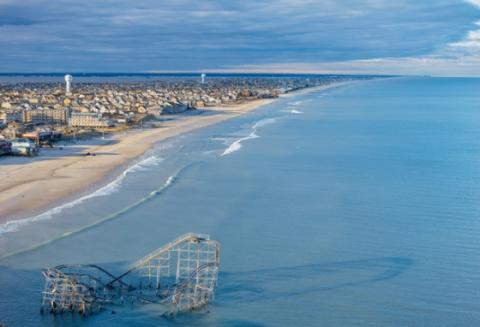IPCC’s Projected Sea Level Rise may already be outdated, says NASA
According to Steve Nerem of the University of Colorado at Boulder, who happens to be the lead scientist of the Sea Level Change Team of NASA, when heat travels beneath the ocean, it starts expanding exactly like mercury of a thermometer.
New Orleans, which is presently recovering from Hurricane Katrina could also face danger as NASA’s words have raised concerns that flood-proofing projects may have misjudged the sea-level rise. Even NASA has found that some of its critical infrastructure is under threat by rising sea levels.
NASA said that over one-third of the human population, which is around 2.4bn people are living within 100 km (60 miles) of an oceanic coast.
Eric Rignot, glaciologist from the University of California-Irvine said that the accumulated data linked to Antarctica and Greenland is bothersome, as it implies fast melting of ice sheets.
Losses (from icebergs) have been studied in great detail by scientists for years, but the meltwater component, despite being the dominant agent in the ice sheet’s mass balance, has received comparatively less study.
The ice melt from Greenland’s glaciers is the largest contributor to sea level rise in the Northern Hemisphere.
“The Greenland ice sheet, covering 660,000 square miles – almost the area of Alaska – shed an average of 303 gigatons of ice a year over the past decade, according to satellite measurements”, NASA said. A ton of research is being done at the moment on trying to develop an accurate model to predict the impact and resulting consequences of the rising sea levels across the globe, especially with the Climate Change Summit scheduled to be held at Paris later this year.
In the last century, the oceans have risen between four and eight inches, but new research from the National Aeronautics and Space Administration (NASA) indicates that the rate of sea level rise has increased and could be as much as three feet over the next century. The west coast of the United States actually had sea levels drop slightly, while other parts of the world saw rises as big as nine inches.
At this moment, warming of seas and expansions of waters caused by it make up around a third of global sea level rise.








